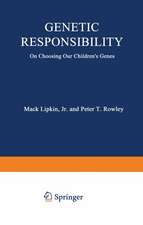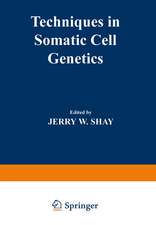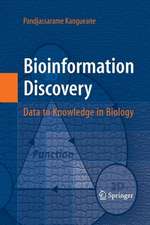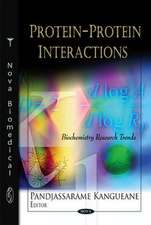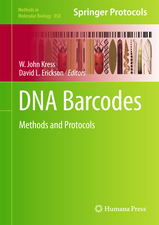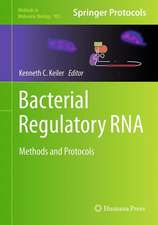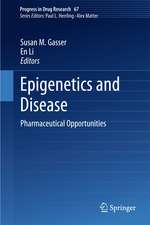Protein-Protein and Domain-Domain Interactions
Autor Pandjassarame Kangueane, Christina Niloferen Limba Engleză Hardback – 28 feb 2018
| Toate formatele și edițiile | Preț | Express |
|---|---|---|
| Paperback (1) | 1092.06 lei 3-5 săpt. | |
| Springer Nature Singapore – 14 ian 2019 | 1092.06 lei 3-5 săpt. | |
| Hardback (1) | 1098.84 lei 3-5 săpt. | |
| Springer Nature Singapore – 28 feb 2018 | 1098.84 lei 3-5 săpt. |
Preț: 1098.84 lei
Preț vechi: 1156.67 lei
-5% Nou
Puncte Express: 1648
Preț estimativ în valută:
210.32€ • 216.74$ • 177.56£
210.32€ • 216.74$ • 177.56£
Carte disponibilă
Livrare economică 10-24 februarie
Preluare comenzi: 021 569.72.76
Specificații
ISBN-13: 9789811073465
ISBN-10: 9811073465
Pagini: 194
Ilustrații: XIX, 207 p. 161 illus., 82 illus. in color.
Dimensiuni: 155 x 235 mm
Greutate: 0.53 kg
Ediția:1st ed. 2018
Editura: Springer Nature Singapore
Colecția Springer
Locul publicării:Singapore, Singapore
ISBN-10: 9811073465
Pagini: 194
Ilustrații: XIX, 207 p. 161 illus., 82 illus. in color.
Dimensiuni: 155 x 235 mm
Greutate: 0.53 kg
Ediția:1st ed. 2018
Editura: Springer Nature Singapore
Colecția Springer
Locul publicării:Singapore, Singapore
Cuprins
Module 1. Preface.- Module 2. Introduction to protein complexes.- Module 3. Historical advancement.- Module 4. Databases for protein complexes.- Module 5. Types of protein complexes.- Module 6. Hetero dimer protein complexes.- Module 7. Homo dimer protein complexes.- Module 8. Multimer protein complexes.- Module 9. Interfaces in protein complexes.- Module 10. Principles of protein-protein binding.- Module 11. Homodimer folding and binding.- Module 12. Gene fusion and protein complexes.- Module 13. Domain-domain interactions.- Module 14. Protein docking: Methods, software tools and servers.- Module 15. Protein complexes, pathways and networks.- Module 16. Protein complexes and biological functions.- Module 17. Protein complexes in diseases.- Module 18. Protein complexes in drug discovery & vaccine development.- Module 19. Protein complexes in genome and proteome analysis.- Module 20. Conclusions & challenges.
Notă biografică
Dr. Pandjassarame Kangueane is Director of Biomedical Informatics (P) Ltd, India, Chief Editor, Bioinformation, India and Associate Editor, BMC Bioinformatics, UK. He served as a professor at the Department of Biotechnology at AIMST University, Malaysia (2009-2011), visiting professor at VIT University, India (2007-2009), assistant professor at NTU, Singapore (2002-2006) and visiting scientist (S*Bio Pte Ltd) at the Chiron Corporation (2001), USA. His research interest is in bioinformatics and biotechnology, particularly HLA-based peptide vaccine design, protein-protein interactions, lipase (an enzyme) engineering and genome biology. He has received various prestigious awards, notably the Indian Leadership award for Industrial Development from the All India Achievers Foundation, Vishal Bharathi award with the Bharath Jothi award from the GOPIO, France and was made an Ambassador for Peace by the Universal Peace Federation for his contribution to science and technology. He has served as referee for a number of international journals, including Bioinformatics (UK), Nucleic Acids Research (UK), Vaccines (USA), Plos ONE (USA), BMC Genomics (UK), the Journal of Molecular Modeling & Graphics (USA) and BMC Bioinformatics. He has more than 15 years of teaching experience in bioinformatics, bioprocess technology, biotechnology and computing.
He has also published more than 50 research articles in peer-reviewed international journals and authored or co-authored numerous books and book chapters. He is a member of numerous international scientific societies and organizations, such as APBioNet, Singapore, the Agro Informatics Society and the Biomedical Informatics Society, India.
Ms. Christina Nilofer is a scientist at Biomedical Informatics (P) Ltd. She continued her postgraduate studies at Stella Maris College (Autonomous), Madras University, Chennai, India and is currently completing her doctorate in Biotechnology at VIT University, Vellore, India. She has served as researcher in biotechnology (Saksin Lifesciences (P) Ltd) and bioinformatics (Genome Life Sciences (P) Ltd) industries. She has authored and co-authored two book chapters and published two articles in peer-reviewed journals.
He has also published more than 50 research articles in peer-reviewed international journals and authored or co-authored numerous books and book chapters. He is a member of numerous international scientific societies and organizations, such as APBioNet, Singapore, the Agro Informatics Society and the Biomedical Informatics Society, India.
Ms. Christina Nilofer is a scientist at Biomedical Informatics (P) Ltd. She continued her postgraduate studies at Stella Maris College (Autonomous), Madras University, Chennai, India and is currently completing her doctorate in Biotechnology at VIT University, Vellore, India. She has served as researcher in biotechnology (Saksin Lifesciences (P) Ltd) and bioinformatics (Genome Life Sciences (P) Ltd) industries. She has authored and co-authored two book chapters and published two articles in peer-reviewed journals.
Textul de pe ultima copertă
This book illustrates the importance and significance of the molecular (physical and chemical) and evolutionary (gene fusion) principles of protein-protein and domain-domain interactions towards the understanding of cell division, disease mechanism and target definition in drug discovery. It describes the complex issues associated with this phenomenon using cutting edge advancement in Bioinformatics and Bioinformation Discovery. The chapters provide current information pertaining to the types of protein-protein complexes (homodimers, heterodimers, multimer complexes) in context with various specific and sensitive biological functions. The significance of such complex formation in human biology in the light of molecular evolution is also highlighted using several examples. The chapters also describe recent advancements on the molecular principles of protein-protein interaction with reference to evolution towards target identification in drug discovery. Finally, the book also elucidates a comprehensive yet a representative description of a large number of challenges associated with the molecular interaction of proteins.
Caracteristici
This is the first book to combine Protein-Protein interactions with domain-domain interactions explaining the mechanism of gene fusion with appropriate hypothesis
This book provides a comprehensive overview of advanced topics in Bioinformatics
This book explains complex concepts on the subject using simple graphical illustrations
Each chapter will contain 20 exercise problems or questions for practice
It provides a descriptive understanding of molecular regulation towards vaccine development and disease-specific target discovery
This book provides a comprehensive overview of advanced topics in Bioinformatics
This book explains complex concepts on the subject using simple graphical illustrations
Each chapter will contain 20 exercise problems or questions for practice
It provides a descriptive understanding of molecular regulation towards vaccine development and disease-specific target discovery


